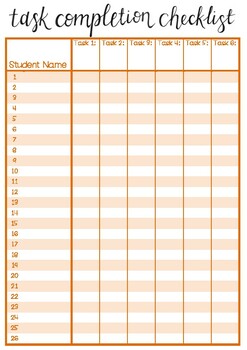

- SHARE GOOGLE TASKS HOW TO
- SHARE GOOGLE TASKS CODE
Copy the code from the browser, paste it into the command-line prompt,Īuthorization information is stored in the file system, so the next time you. Select one account to use for authorization. If you're signed in to multiple accounts, If you're not already signed in to your Google Account, you're. The first time you run the sample, it prompts you to authorize access: In your working directory, start a web server: YOUR_API_KEY: the API key that you created as. YOUR_CLIENT_ID: the client ID that you createdĪuthorized credentials for a web application. TokenClient = ()\n`,ĭocument.getElementById('content').innerText = output * Callback after Google Identity Services are loaded. * Callback after the API client is loaded. Gapi.load('client', initializeGapiClient) Authorization scopes required by the API multiple scopes can beĭocument.getElementById('authorize_button').style.visibility = 'hidden' ĭocument.getElementById('signout_button').style.visibility = 'hidden' Discovery doc URL for APIs used by the quickstart TODO(developer): Set to client ID and API key from the Developer Console In the index.html file, paste the following sample code: In your working directory, create a file named index.html. Make a note of these credentials because you need them later in this quickstart. Optional: If you're creating credentials as a prerequisite for a JavaScript quickstart, you must also generate an API key. The newly created credential appears under "OAuth 2.0 Client IDs." Client secrets aren't used for Web applications. The OAuth client created screen appears, showing your new Client ID and Client secret. Then, enter an endpoint URI to which the OAuth 2.0 server can send responses. 
NET, and more) – Under "Authorized redirect URIs," click Add URI. This identifies the domains from which your application can send API requests to the OAuth 2.0 server. Then, enter a URI to use for browser requests. Client-side apps (JavaScript) – Under Authorized JavaScript origins, click Add URI.Add authorized URIs related to your app:.This name is only shown in the Google Cloud console. In the "Name" field, type a name for the credential.Click Application type > Web application.Click Create Credentials > OAuth client ID.At the top-left, click Menu menu > APIs & Services > Credentials.You must create a separate client ID for each platform.

To authenticate as an end user and access user data in your app, you need toĬreate one or more OAuth 2.0 Client IDs. In the Google Cloud console, enable the Google Tasks API.Īuthorize credentials for a web application You can enable one or more APIs in a single Google Cloud project. Enable the APIīefore using Google APIs, you need to enable them in a Google Cloud project. To complete this quickstart, set up your environment. A Google account with Google Tasks enabled.If you're unfamiliar with authentication and authorization forĪuthentication and authorization overview.Ĭreate a JavaScript command-line application that makes requests to the Before you can run the sampleĪpp, each quickstart requires that you turn on authentication andĪuthorization. You use the client libraries for your own apps. Google Workspace quickstarts use the API client libraries to handle someĭetails of the authentication and authorization flow.
SHARE GOOGLE TASKS HOW TO
Quickstarts explain how to set up and run an app that calls a







 0 kommentar(er)
0 kommentar(er)
